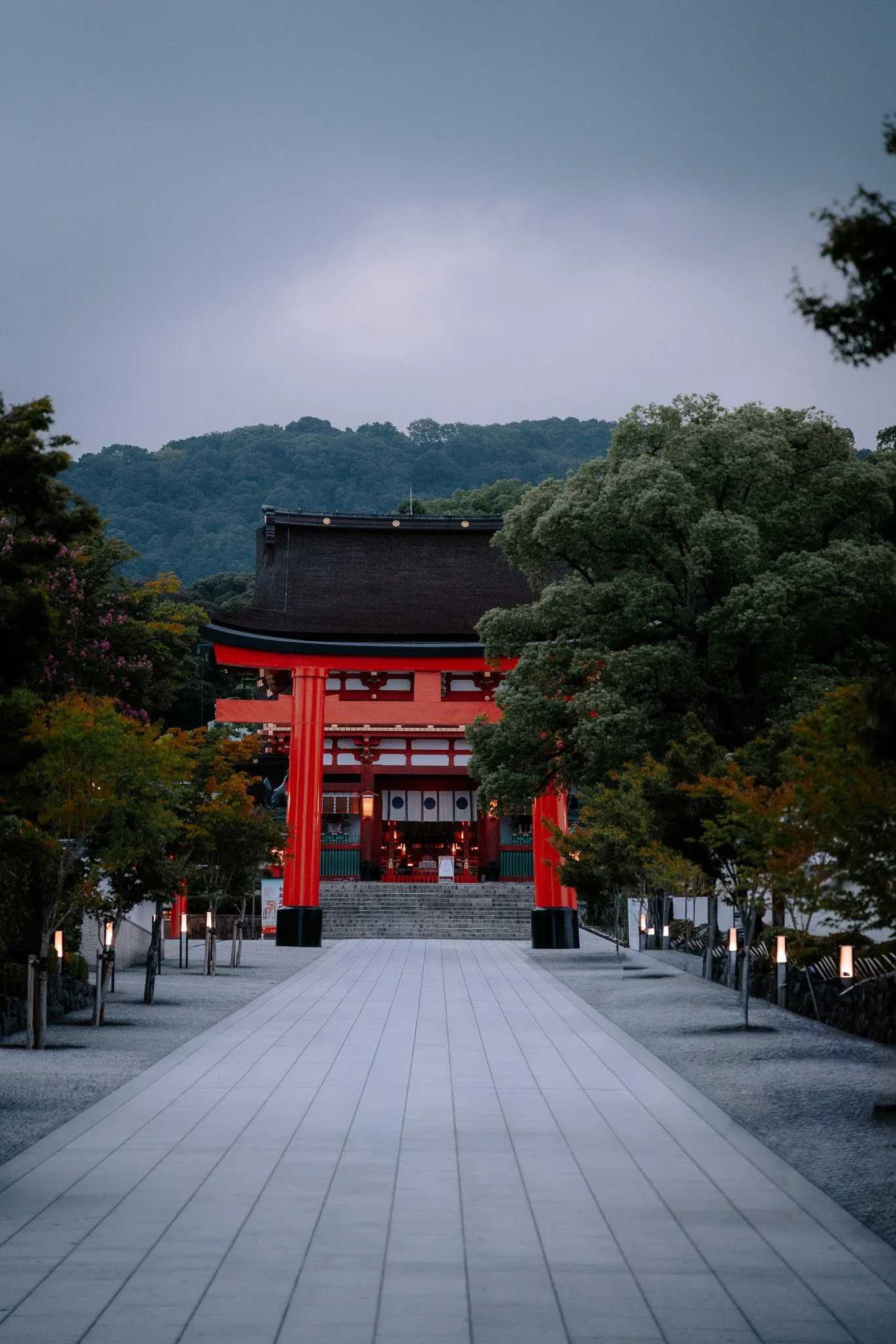There’s a moment before sunrise at Fushimi Inari Taisha when the air itself seems to hum. The world is still half-asleep — Kyoto’s summer humidity building, cicadas silent, the city not yet stirring. Climbing the mountain trail toward the Senbon Torii, I could already see the faint orange glow of the gates ahead, dimly lit by lanterns that would soon surrender to the dawn.
The first light breaks slowly here. It doesn’t flood — it seeps, slipping between the cracks of a thousand vermilion torii gates as if the sun itself is being filtered through prayer and wood. Each gate stands shoulder to shoulder, forming a tunnel that feels alive, whispering with the footsteps of pilgrims and the scent of damp cedar.
Photographically, it’s one of the most challenging and rewarding locations I’ve ever worked in. The contrast between shadow and flare changes by the second; one moment you’re dealing with deep forest blacks, the next, the path is awash in sunlight. I started shooting around 6:00 a.m., moving fast to get ahead of the few early risers on the first train out of Kyoto. Reaching the first tunnel, blue hour begins to turn to gold, the repetition of gates pulls the eye inward — an infinite perspective that becomes almost hypnotic. The surrounding forest itself feels like a living frame, pressing in from both sides, swallowing the man-made structure back into nature.
As we climb the stairs, winding our way up the mountain, we pass Kumataka Shrine. The pond was completely still, with just the ripples of morning insects on the surface. The black surface of the water and dark forest contrasted by the almost neon shine by the waters edge was a dream. Reaching the top gave a reprieve from the humidity as the leaves started to catch the light. The calligraphy is only written on one side of each gate, so at the halfway point of the loop (as we begun to descend) the scene once again changes.
Fushimi Inari isn’t just a shrine; it’s a meditation on light and patience. The path stretches endlessly upward, each gate a prayer, each photograph a pause between breaths. When the crowds arrive later in the morning, the magic changes — but at sunrise, it’s pure and sacred, the kind of silence you can almost hear through the shutter.
Technical Notes:
Lenses: 24-105mm f/4.5
Settings: ISO 100–8000, as I did not bring a tripod! Travel light, and stay out of the way of locals!
Best time: 5:00–6:30 a.m., when the light is soft and gates are empty. Coming down at 9 a.m the crowds were already on the way up (no chance of getting a photo with no one else in it!)
Color Grading Tip: Slightly desaturate greens and warm up the reds to let the torii glow naturally — Kyoto’s morning light doesn’t need exaggeration; it only needs respect.





































